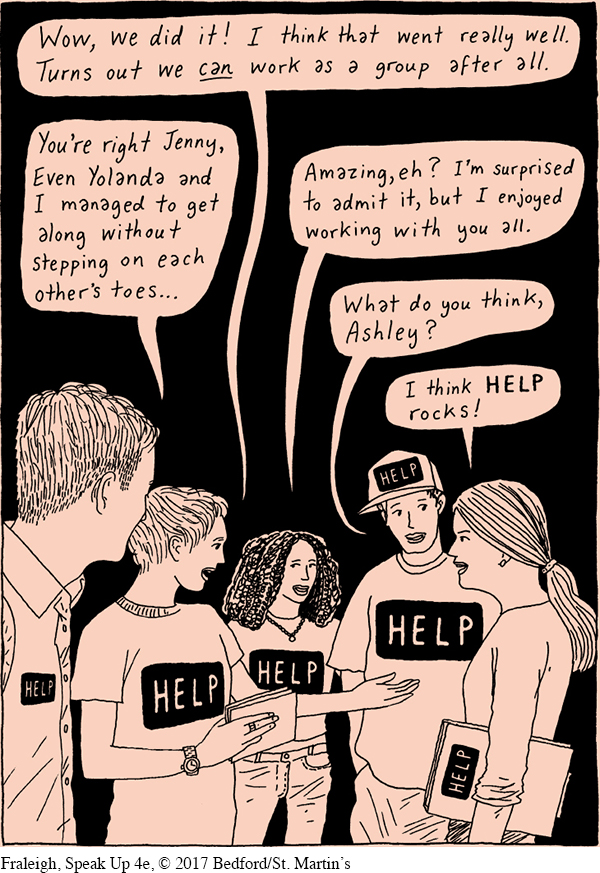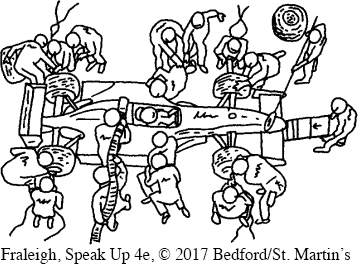Introduction to Chapter 20
608
20
GROUP COMMUNICATION

Look for the  and
and  throughout the chapter for adaptive quizzing and online video activities.
throughout the chapter for adaptive quizzing and online video activities.
609
“Several heads are better than one.”
Jenny, Sam, Juan, Ashley, and Yolanda were taking a course called Community Service 101, which gave students credit for performing volunteer work. The instructor organized the students into five groups, and Jenny, Sam, Juan, Ashley, and Yolanda were placed together as a group. Each group had to choose one volunteer project, and each member of the group had to contribute at least thirty hours of service to the project. At the end of the term, each group would deliver a thirty-
Throughout the term, Jenny, Sam, June, Ashley, and Yolanda experienced firsthand the challenges and benefits of working in a group. For example, they argued over what to call themselves and, after an intense and uncomfortable debate, eventually settled on HELP (Hands-
610
As the project unfolded, HELP’s attention to effective leadership and productive participation enabled the group’s members to select and carry out a worthy project—
Despite the rocky start, the group’s commitment to the mission and to one another paid big dividends. By the time HELP was scheduled to deliver its presentation on the project to the rest of the class, Jenny, Sam, Juan, Ashley, and Yolanda had mastered the challenges of managing group dynamics. Each member described a different aspect of how HELP carried out its project and what results the group achieved, and the speech was a success.
Through their project, these students discovered both the difficulties and the advantages of working in a small group—a limited number of people (three or more) gathered for a specific purpose. This classroom experience showed them that group dynamics—the ways in which members relate to one another and view their functions—
Learning how to master group dynamics, work well with others in pursuit of a common goal, and communicate your group’s achievements to others are valuable life skills. Although group interactions can sometimes be frustrating, you will inevitably be asked or decide to participate in a group at some point in your educational and professional lives—

611
Why is working effectively in a group important? Small groups offer important advantages over individual efforts. Often, people can achieve a better outcome by collaborating on a task rather than working alone. Each group member has unique experiences and perspectives to offer. By sharing ideas, each member has the chance to spot potential problems or improvements in a plan that a lone individual might miss. And each person in a group has different strengths and interests. The group can divide up a project so that each member takes responsibility for the portions of the job he or she is best suited for.

But as we’ve seen with HELP’s story, to gain the benefits of collaboration, group members must interact productively. This chapter provides suggestions for managing key elements of group dynamics—